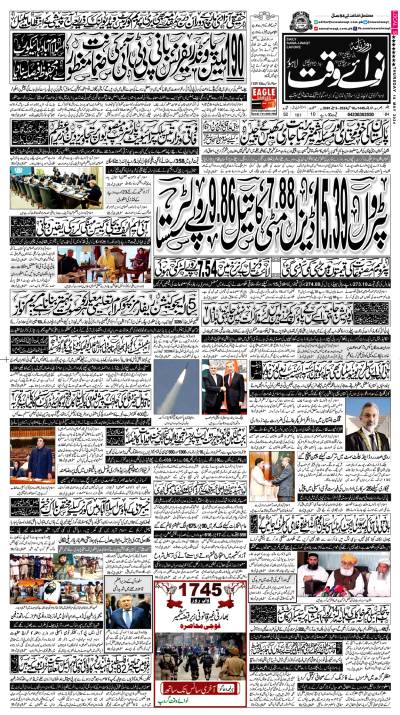Last month was a big month for Pakistan’s inflation, as it clocked 28.60% and now with a straight Rs 20/litre jump in petrol prices on the first day of this month, this number may climb further. Naturally, keeping to a text book approach the Pakistani central bank kept the current interest rates intact; a level that is a historic high in Pakistan’s economic history. In this very context, if the recent Labour employment and consumer expectations surveys are anything to go by, it seems evident that the economy has already hit a recession mode with an inflation that keeps on climbing (stagflation many say). However, for now the new government coming in, it would be prudent to take a deep dive to see that what exactly are the inflation drivers and do any further monetary tightening even matters. Also, in today’s post-Covid world , the core inflation numbers have become increasingly irrelevant or misleading - core inflation is annual inflation excluding food and energy. Why the core inflation barometer has of late become misleading, because post-Covid a sort of debt debacle has engulfed a large number of developing countries in-turn putting a strain on the currency values and their ability to trade globally - Pakistan has been no exception. So, really if one takes out the impact of energy, currency devaluation and the marginalised ability to regulate the market through cheap imports, the inflation in Pakistan in reality has come down. Therefore, when dissecting the inflation drivers in Pakistan, it becomes quite clear that the real cost push is in fact coming from supply-chain constraints and operational inefficiencies. And in such an existing negative environment if the government further stifles economic activity and growth through irrational monetary tightening, high taxation and poor economic governance that stokes corruption cum rent-seeking, the results will simply keep going in the wrong direction: This is precisely what is happening in Pakistan’s economy today!
Back in 1975, economist Robert Gordon argued that it was important to distinguish between inflation driven by goods with highly volatile prices (like food and energy) or one that is due to a market disruption caused by inappropriate government policies and what he termed as hard-core inflation, driven by goods and services whose prices are either slow to change or in essence change due to operational bottlenecks (supply-chain). His point being that while inflation caused by a volatile item like energy tends to be easy come, easy go, but the inflation driven by elements like supply-chain and faulty governmental policies cum shoddy economic governance tends to be stubborn; again a phenomenon we are currently witnessing here in Pakistan. So ingenera, as a practical matter, most central banks ended up focusing on a measure of (hard) core-inflation - the ‘hard’ part of the term got lost somewhere along the way - that simply excluded food and energy, which historically were mostly the main sources of large but temporary short-term fluctuations in inflation. And although this focus was also very pertinent and extremely useful till recently, for example even in the aftermath of the 2008 financial crisis, today in the post-Covid world new realities and underlying drivers of current-day inflation have emerged that require being tackled in significantly different ways than what was traditionally the case; meaning mainly monetary tightening (putting the interest rates up).
This is where we are also going wrong and a course correction is required to instead back growth and employment generation. So what should we essentially be focusing on? My recommendation would be to simply exclude currency devaluation and energy and then come up with an inflation indicator that primarily thrives on supply-chain bottlenecks, operational inefficiencies, unfair or regionally uncompetitive taxation, a delta representing added cost due to market distortion from corruption and rent-seeking and from unnecessary state’s oversight, since these are the real underlying factors that need to be addressed. Once real inflation correlating to these is determined a realistic and more effective monetary policy will automatically become clear and will get shaped organically. Anything else, in case of the rather peculiar nature of the prevalent inflation in Pakistan, will just be tantamount to misleading stakeholders rather than helping them. Seems, work cut out for the incoming economic managers now!
Thursday, May 16, 2024
Inflation - A work cut out for incoming economic managers

The writer is an entrepreneur and economic analyst. He can be contacted at kamal.monnoo@gmail.com
PM directs to constitute committee on Neelum-Jhelum Hydropower Project matters
3:47 PM | May 16, 2024
PIE holds inaugural meeting of newly eatablished RAG
May 16, 2024
Police nab 10 drug peddlers our staff reporter
May 16, 2024
IESCO ensuring unintrruted power supply
May 16, 2024
Rain Damage
May 16, 2024
LESCO Next
May 16, 2024
Propaganda War
May 16, 2024
Heat Alert
May 15, 2024
Tax Reform
May 15, 2024
2022 Floods - Road to Recovery
May 16, 2024
Success of Lunar Mission
May 15, 2024
Service disruption
May 15, 2024
Weather Crisis
May 15, 2024
Reforming the Wheat Purchase System
May 15, 2024
ePaper - Nawaiwaqt
Advertisement
Nawaiwaqt Group | Copyright © 2024





